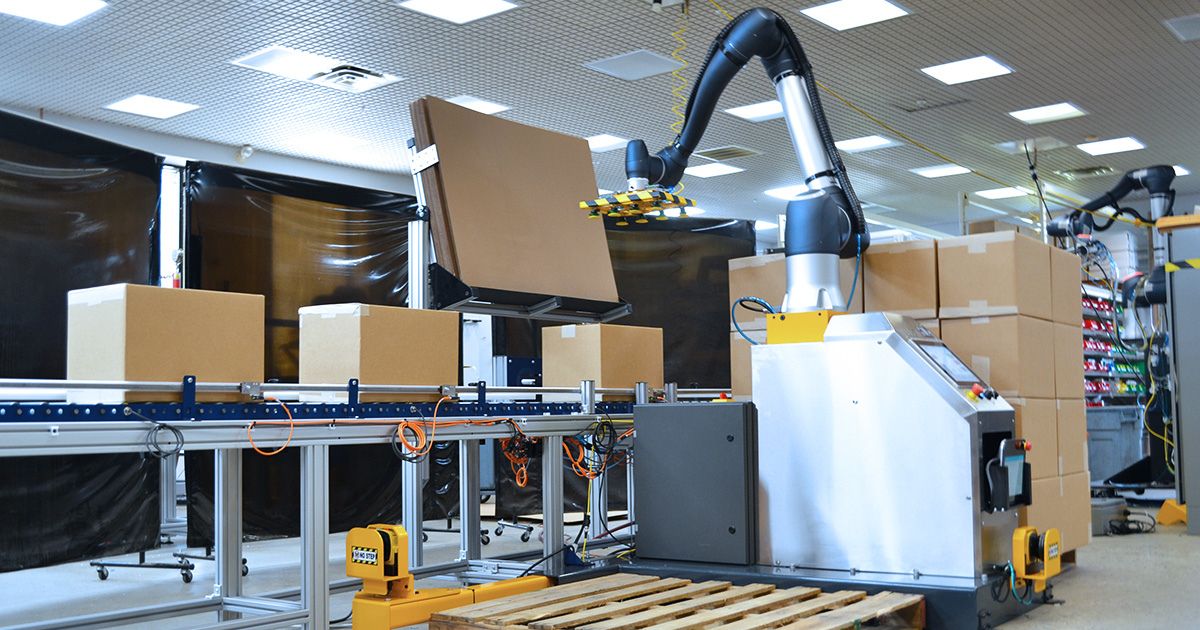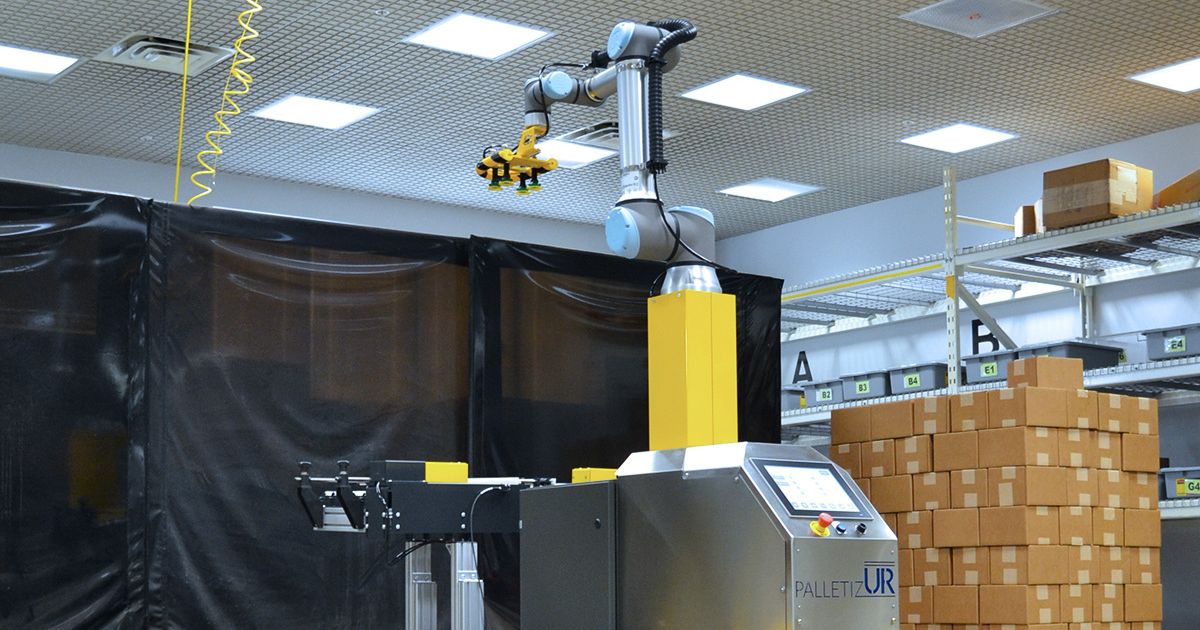In the rapidly evolving sector of industrial automation, palletizing robots have become integral. Corporations have discovered that these marvels of modern engineering can significantly enhance efficiency in warehouses and manufacturing facilities. As these advanced technologies are increasingly integrated into operations, it’s imperative to prioritize safety to mitigate accidents and maintain an effective workflow.
While accidents can and do occur with industrial palletizing robots, cobots remain among the safest robotic systems to integrate into your facility. Still, many safety precautions should be taken to ensure a safe and efficient environment for all. Read on to learn more about palletizing robot safety measures.
Understanding the Safety Landscape
Understanding cobot palletizers requires an in-depth comprehension of the pertinent safety standards that govern collaborative robots and their operation. This is especially critical given the prevailing misconception that the sophisticated software of these robots negates the need for stringent safety protocols. In reality, these robots are engineered with advanced safety mechanisms, distinguishing them from traditional industrial robots.
Unlike their predecessors, collaborative robots are programmed to halt immediately upon detecting unexpected obstacles in their operational path. This feature highlights the critical importance of adhering to established safety guidelines.
Operators and managers need to acquaint themselves thoroughly with these regulations. Doing so not only ensures compliance but also maximizes the efficiency and effectiveness of these technological assets. This comprehensive understanding is fundamental to harnessing the full potential of palletizing robots while maintaining a safe and productive work environment.
Resources for Best Practices
To gain a comprehensive understanding of palletizing robot safety, it is highly advisable to consult authoritative and reputable sources like the ANSI RIA standards. These standards provide detailed and up-to-date safety guidelines that you need to know.
ONExia, an expert in adhering to these standards, offers an array of educational resources and training services. These resources are meticulously designed to align with the most rigorous safety benchmarks, ensuring that users of their palletizing robots are well-informed and fully equipped to maintain a safe working environment. This commitment to education and adherence to high safety standards highlights ONExia’s dedication to promoting the safe and efficient use of automation technology.
Best Practices for Ensuring Safety

ONExia Palletizers are designed to be collaborative and require no caging or hard guarding. Instead, these innovative robots employ highly sophisticated scanners that create virtual safety perimeters around their operational area. In the event of any intrusion or breach within this virtual boundary, the robots are designed to respond instantaneously by decelerating, thereby mitigating potential hazards.
Furthermore, ONExia places a high value on simplicity in our system designs. This approach involves streamlining operations and avoiding superfluous complexities, without compromising on the efficacy and robustness of the safety measures.
Compliance with Regulations
Compliance with industry regulations is a critical aspect of implementing palletizing robot systems. Engaging with third parties like ANSI (American National Standards Institute) is common practice. Large corporations may also have their Environmental Health and Safety (EHS) departments complete a safety audit of the cobot palletizer, providing a 100% success rate in compliance.
Initial Risk Assessment Steps
ONExia places a paramount emphasis on safety right from the beginning of any engagement, integrating area-specific safety standards into every project quotation. This proactive approach ensures that each solution is tailored to meet not only the operational requirements but also the stringent safety norms of the client’s environment.
Training Personnel
ONExia strongly advocates for thorough and detailed training of personnel, which is critical for the safe and efficient operation of their palletizing robots. Factory Acceptance Testing (F.A.T.) sessions are led by our team of robotic system integrators to offer practical, hands-on experience with the cobot system. These testing sessions allow your team to gain a deep understanding of the robots you are deploying in your facility and their software.
This approach ensures that all team members, from operators to shop floor leaders, are proficient in the necessary safety protocols and understand the maintenance schedules. Such comprehensive training is pivotal in ensuring that all staff members are equipped with the skills and knowledge required to operate the robots safely and efficiently, thereby fostering a safe and productive workplace.
Ensuring Long-Term Palletizing Robot Safety
As technology advances, so does the safety landscape of collaborative palletizing robots. A significant aspect of this adaptation is the capability to handle increasing payloads.
As these robots are tasked with managing heavier and more complex loads, ONExia proactively ensures that the safety standards are not only met but also enhanced to match these new challenges. This forward-thinking approach involves anticipating and implementing advanced safety measures that are specifically designed to manage these heavier loads effectively.
Emerging Technologies
Staying abreast of emerging technologies is essential for businesses to maintain leading safety standards in palletizing robot operations. ONExia is committed to evolving safety protocols in line with increasing payload capacities, anticipating future challenges in handling larger loads safely.
Palletizing robots represent a significant advancement in the field of automated packaging systems. Adhering to established safety practices and staying informed about technological developments are critical for businesses to fully utilize this technology while ensuring a secure and efficient working environment. Contact us today for more information about how you can automate your facility safely.

